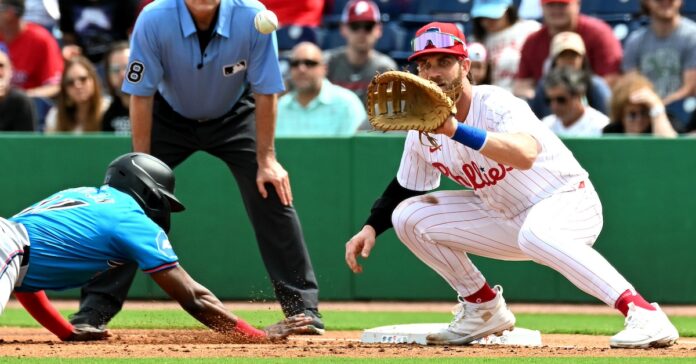If you’ve been reading me with any frequency for the past 20-some years — the last six of them here at FanGraphs — you may have noticed that I’m prone to dropping the occasional number into my prose. In fact, Statcast says I do so in 57.6% of my sentences, which ranks in the 93rd percentile even among my FanGraphs colleagues. Admittedly, I just made that part up, but the point is that I’m someone who tends to present a fair bit of data to the reader in support of my analysis.
At this site, we feature a lot of data, and as a consequence, not all of it is easy to find, but we do our best to organize it logically so that users can do so. Once again, I’d like to highlight a particular area as part of our series on the useful site features you’ll find at FanGraphs.
Back in 2007, for the Baseball Prospectus book It Ain’t Over ‘Til It’s Over, I compiled a historical All-Star squad of ignominy, identifying players at each position whose performances had dragged their teams down in tight races: the Replacement-Level Killers. I’ve revisited the concept numerous times at multiple outlets and have adapted an expanded form of it into a midsummer series that serves as a trade deadline preview, highlighting the particular trouble spots on each contender.
Doing so with efficiency requires integrating data from several corners of our site, including our Playoff Odds, our Depth Charts, and several different leaderboards. I can’t pull the projection stuff into our custom leaderboards, but I can see the performance data at a glance, which helps me figure out which teams to highlight. The most important part of this is our Positional Splits.
With our previous leaderboard interface, it was easy to get confused by the horizontal ribbon of positions — P C 1B 2B SS etc — that ran across the width of the page. Each one of those represented a player’s primary position based upon a certain playing time threshold, but the results tended to be noisy, as the stats shown were for the players’ full-season performances. Our new interface replicates that functionality, so if you want to see all of the first basemen in the Phillies’ pool who have taken at least 100 PA for the team, this is what it would look like:

Sometimes that’s all you need, but sometimes seeing a list of of players who have accounted for about 1,500 plate appearances isn’t all that helpful; in this case, we’ve got Alec Bohm with the most playing time of the quartet, though the majority of that time was at third base, and likewise Jake Cave made more appearances in the outfield. For the Killers series, I prefer to focus on what the team has actually gotten from its players specifically while serving in a given role, which requires more precision (albeit with the caveat that defensive statistics aren’t as precise as we imagine them to be, particularly once the samples get smaller).
To do so, I leave the Primary Position dropdown set at “All Positions” and instead scroll to the position in question via the adjacent “Positional Splits” dropdown. For the 2023 Phillies, that looks like this:

That’s more like it, and for the purposes of comparing their combined output to that of the other 29 teams, I can toggle to this…

…which shows me that the Phillies are pretty much middle of the pack in first base production and above my threshold for a Killers list. They did make the midsummer list last year, because Bryce Harper had only recently debuted there, but as you could see from the second screenshot, he ended up raking to the point of producing 1.4 WAR in just 36 games in that capacity, elevating the Phillies out of that territory. I anticipated such a possibility in the text.
There are of course other ways to use this feature. Here’s one that shows the 30 teams’ combined outfield production across all three positions last year, something one might want to note in the context of a recent or potential transaction:

Moving on from the Dashboard preset and the Batting stats, here’s one showing the bullpens ranked by strikeout percentage in the second half (alas, the time-sensitive options don’t work for the batting stats in this way, only the pitching ones):

Back to the Replacement Level Killers, here’s the custom table I built that gathers data from our Dashboard and Value presets for presentation within the series:

And here’s how a table based on that data and our rest-of-season (ROS) projections looks when spotted in the wild (this one used only data through July 19 instead of the full season):

It’s all possible thanks to those positional splits, which are just one of the numerous tools we have at FanGraphs. Those tools and the data underlying them aren’t worth much if you can’t find them, which is why it’s important to have great development team, as we do here. You’ve heard my pitch before and you’re going to hear it again: The best way to support the further development of such tools, and to support the site in general, is with a FanGraphs Membership. If you haven’t already joined, we hope you’ll consider it. And if you have joined, in addition to accepting our profuse thanks, please consider renewing or even sharing the bounty of what we have to offer with a gift subscription.

